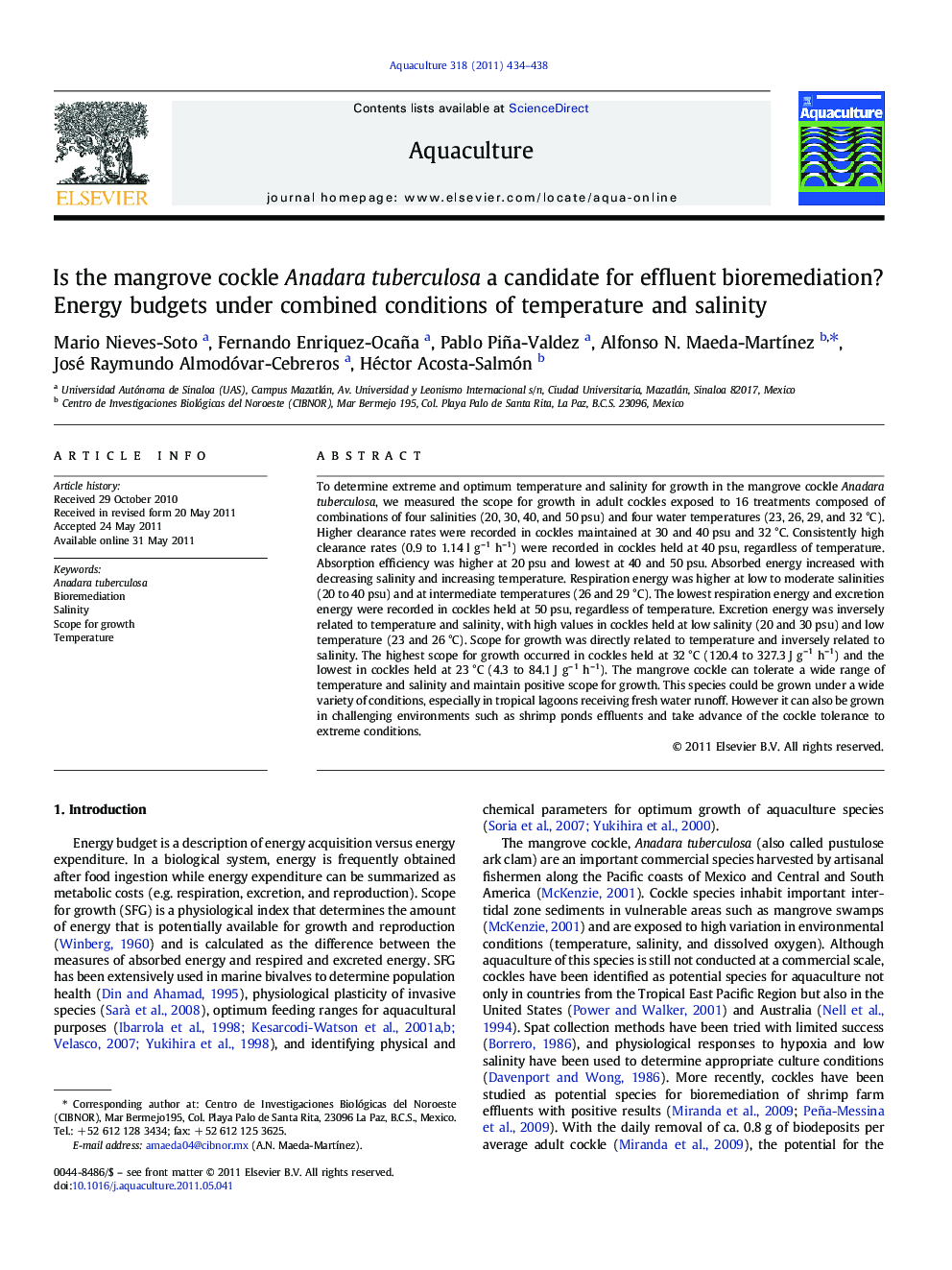| Article ID | Journal | Published Year | Pages | File Type |
|---|---|---|---|---|
| 2423201 | Aquaculture | 2011 | 5 Pages |
To determine extreme and optimum temperature and salinity for growth in the mangrove cockle Anadara tuberculosa, we measured the scope for growth in adult cockles exposed to 16 treatments composed of combinations of four salinities (20, 30, 40, and 50 psu) and four water temperatures (23, 26, 29, and 32 °C). Higher clearance rates were recorded in cockles maintained at 30 and 40 psu and 32 °C. Consistently high clearance rates (0.9 to 1.14 l g–1 h–1) were recorded in cockles held at 40 psu, regardless of temperature. Absorption efficiency was higher at 20 psu and lowest at 40 and 50 psu. Absorbed energy increased with decreasing salinity and increasing temperature. Respiration energy was higher at low to moderate salinities (20 to 40 psu) and at intermediate temperatures (26 and 29 °C). The lowest respiration energy and excretion energy were recorded in cockles held at 50 psu, regardless of temperature. Excretion energy was inversely related to temperature and salinity, with high values in cockles held at low salinity (20 and 30 psu) and low temperature (23 and 26 °C). Scope for growth was directly related to temperature and inversely related to salinity. The highest scope for growth occurred in cockles held at 32 °C (120.4 to 327.3 J g–1 h–1) and the lowest in cockles held at 23 °C (4.3 to 84.1 J g–1 h–1). The mangrove cockle can tolerate a wide range of temperature and salinity and maintain positive scope for growth. This species could be grown under a wide variety of conditions, especially in tropical lagoons receiving fresh water runoff. However it can also be grown in challenging environments such as shrimp ponds effluents and take advance of the cockle tolerance to extreme conditions.
